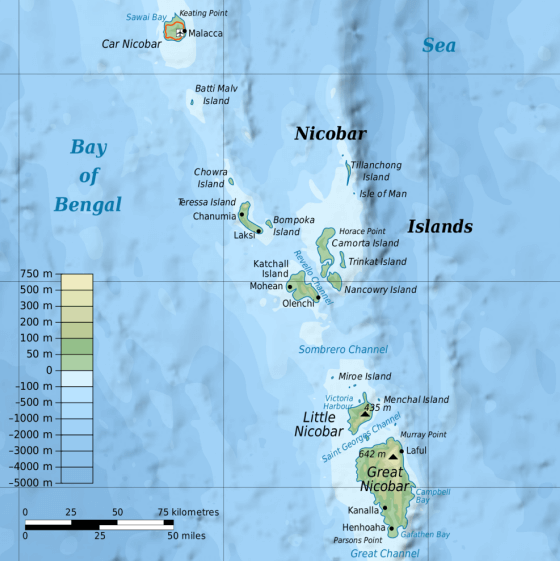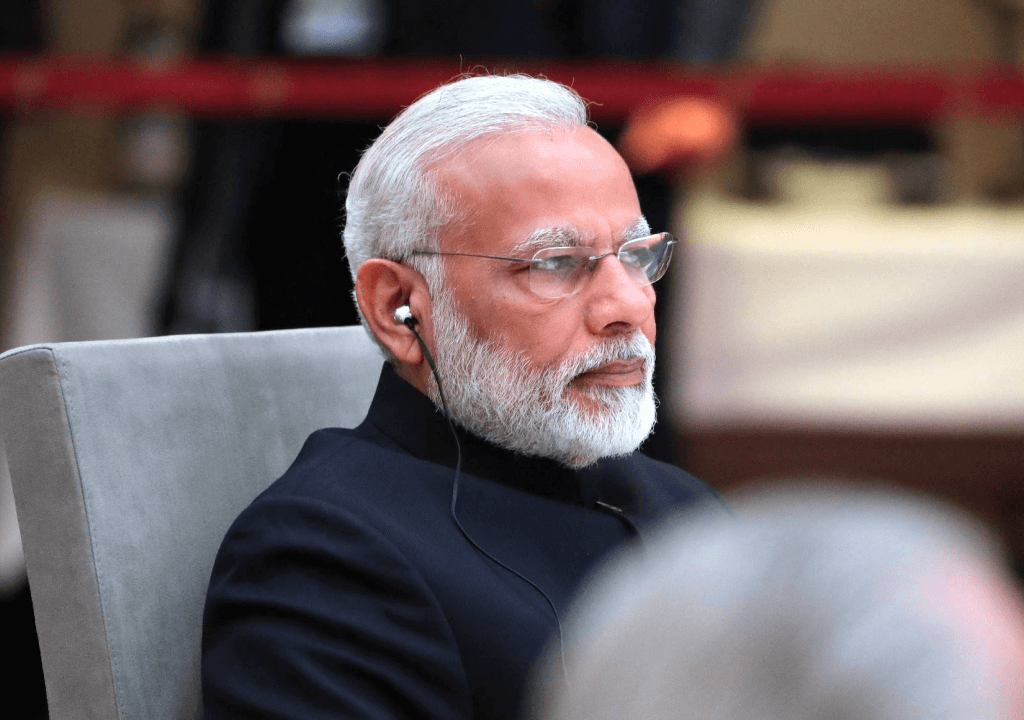India is setting up a pioneering initiative by allocating a substantial investment of $9 billion (£7 billion) to establish a dynamic port city on Great Nicobar Island. Positioned at the entrance of the narrow Malacca Strait, serving as a gateway to the Indian Ocean, this ambitious project represents a transformative effort aimed at reshaping the regional dynamics. The comprehensive plan envisions the evolution of the Indian Ocean island, home to 8,000 inhabitants, into what has been termed the ‘Hong Kong of India.’ Which involves the creation of an international shipping terminal, airport, power plant, military base, and industrial park, strategically aligned with considerations for tourism development.

At the heart of this venture lies India’s dream for dominance over the Malacca trade route, adding layers of geopolitical significance. Predictably, environmentalists, often vocal opponents of infrastructure projects in developing nations, are already raising concerns about one of India’s most ambitious undertakings. Scholars from diverse global perspectives are collectively urging India to reassess its mega-construction plans for the island. Their cautionary message emphasizes that proceeding with the project could potentially deliver a ‘death sentence’ to the indigenous Shompen hunter-gatherer community residing there.
India’s Ambitious Plan

Nestled within the Andaman and Nicobar archipelago in India, Great Nicobar Island stands as a haven predominantly inhabited by tribes. As the largest and southernmost among the Nicobar Islands, its strategic positioning serves as a gateway to the vast Indian Ocean via the narrow Malacca Strait. Notably closer to Indonesia than the Indian Mainland, this island is located just 93 miles northwest of Aceh on the Indonesian island of Sumatra and approximately 800 miles east of Chennai on the Indian mainland.
Great Nicobar accommodates a population of Shompen people estimated to be between 100 and 400. Encompassing 921 km2 (356 sq mi), this sparsely inhabited island is characterized by lush rainforests, earning renown for its rich and diverse wildlife. Presently, the only signs of development on this often-neglected island are an airstrip of 915m at Campbell Bay/Ten Lua on the East coast and at least one small shipping dock.
The island’s history is marked by a significant event – the 2004 earthquake and tsunami – which brought dire consequences, including a day-long isolation from external interactions. Despite its strategic importance and ecological richness, Great Nicobar remains a largely undeveloped landscape, waiting to unfold its potential.
Prime Minister Narendra Modi’s government has unveiled an ambitious investment plan of $9 billion (€8.38 billion) to revolutionize Great Nicobar, envisioning it as a pivotal military and trade hub. The proposed developments encompass an international container terminal, deep-water port, dual-use airport, power plant, and a greenfield township, with the potential to elevate the population to the hundreds of thousands. Positioned strategically near the Malacca Strait, one of the world’s most bustling shipping lanes, the envisioned port in Galathea Bay adds a critical dimension to the plan.
There is a hopeful anticipation for the implementation of free trade policies, distinct laws, and a separate entity, similar to the Hong Kong model. Experts posit that the success of such island endeavors often hinges on exemptions from the mainland’s stringent regulations.
This visionary proposal, brought forth on January 18, 2021, by India’s policy development team NITI Aayog and informed by a comprehensive feasibility report from AECOM India Private Limited, projects a flourishing population of 650,000 inhabitants on the island by 2050. Currently, the island is home to a modest 8,500 residents, while the entire archipelago, comprising over 500 islands, with only about 40 inhabited, accommodates a total population of approximately 380,000. The anticipated population surge raises valid concerns about the substantial ecological pressure it may exert on the island and its environs.
A Stalemate For China
The enduring and contentious border dispute between China and India, Which is unrecognized by either side, has led to significant confrontations on multiple occasions. As India strengthens its alliances with key players like Japan and the U.S., China watches with heightened concern. Part of China’s Belt and Road Initiative strategically invests in India’s neighbors grappling with political and economic instability, including Pakistan, Maldives, Sri Lanka, Bangladesh, and Indonesia. This financial leverage not only provides China with a considerable advantage but also allows it to shape political alliances and influence media narratives against India.
India’s foremost geopolitical challenge with China extends beyond the harsh geography and climate of the land border. It encompasses critical port leases, where vital transport hubs have fallen into Chinese hands due to the inability of recipient countries to repay substantial loans. Notably, Hamabanthotta, a key port leased to China, poses a significant threat to Indian navies, with reports of Chinese naval and spy ships utilizing these strategic locations. If tensions escalate, there is a potential for all Indian ports to be targeted from these Chinese-controlled ports, pushing these nations into a proxy war, given their high dependency on China.
The economic repercussions are twofold: these Chinese ports not only divert trade routes between China and Europe away from traditional Indian ports like Mumbai, Kolkata, and Kochi but also contribute to an economic setback for India. Amidst this complex scenario, India’s newly proposed port city emerges as a potential game-changer. Positioned strategically at the mouth of the Malacca Strait, a critical juncture in the China-Europe trade route, it becomes a focal point in one of the world’s most vital economic conduits in terms of goods’ value and shipping volume. The Indian navy’s presence in these waters creates a strategic stalemate, compelling Chinese ships to navigate through this crucial point, providing India with both economic and military advantages. Despite China exploring alternative land routes through Russia and Pakistan, the conventional route through the Malacca Strait remains irreplaceable. Any Indian blockade in the Malacca Strait could significantly impact the Chinese economy.
The West Bloc’s Opposition
The Western powers, notably the USA and UK, exerting their influence in the Indian Ocean, harbor reservations about India akin to their concerns about China. Despite their inclination to counterbalance China, they are cautious about empowering India too much. Western nations, alongside China, are wary of India gaining an upper hand in the trade route that facilitates 60 percent of global maritime trade. In contrast to the South China Sea, the Malacca Strait region doesn’t currently pose many problems. because there are no unilateral claims. It includes the territorial waters of Thailand, Indonesia, Malaysia, Singapore, and India, which is a major player in the area. Even if no one country wants to rule the route by itself, India’s bold actions on Great Nicobar, which were previously disregarded, indicate a change in its strategic priorities. With this action, India’s influence in the Malacca Strait is expected to grow.
As the initial stages of discontent, the US and UK media expressed numerous reservations about the Nicobar project. Concerns have been prominently raised, particularly in relation to the Great Nicobar actions, with a focus on potential impacts on the Shompen community, deforestation, and seismic activity in the region. This scrutiny has been extensively covered by sources such as The Guardian, BBC, and Deutsche Welle. Evidently, Western nations, disapproving of India’s approach in Great Nicobar, are adhering to their established method of critiquing infrastructure projects in developing countries.. The alignment of India’s trajectory with China’s stirs expectations among Western powers that India will assertively seek a more substantial share in the region. This, in turn, is foreseen to directly impact the trade flowing through this pivotal route.
In Summary
A significant geopolitical shift looms on the horizon if India proceeds with its Great Nicobar plan. This strategic move promises an unprecedented advantage for India in the Malacca Strait. China, finding itself potentially blocked from the Indian Ocean, faces a challenge in advancing its cooperation with India unless its trade route is jeopardized in an unprecedented manner. The impact could be substantial for smaller nations heavily dependent on the trade route. Therefore, the persisting rivalry for influence between China and India in these smaller countries is expected to endure.
It is evident that India is strategically deploying its trump card against China, presenting a formidable challenge. Interestingly, this shift is not welcomed by Western nations, adding an intriguing layer to the evolving geopolitical landscape








